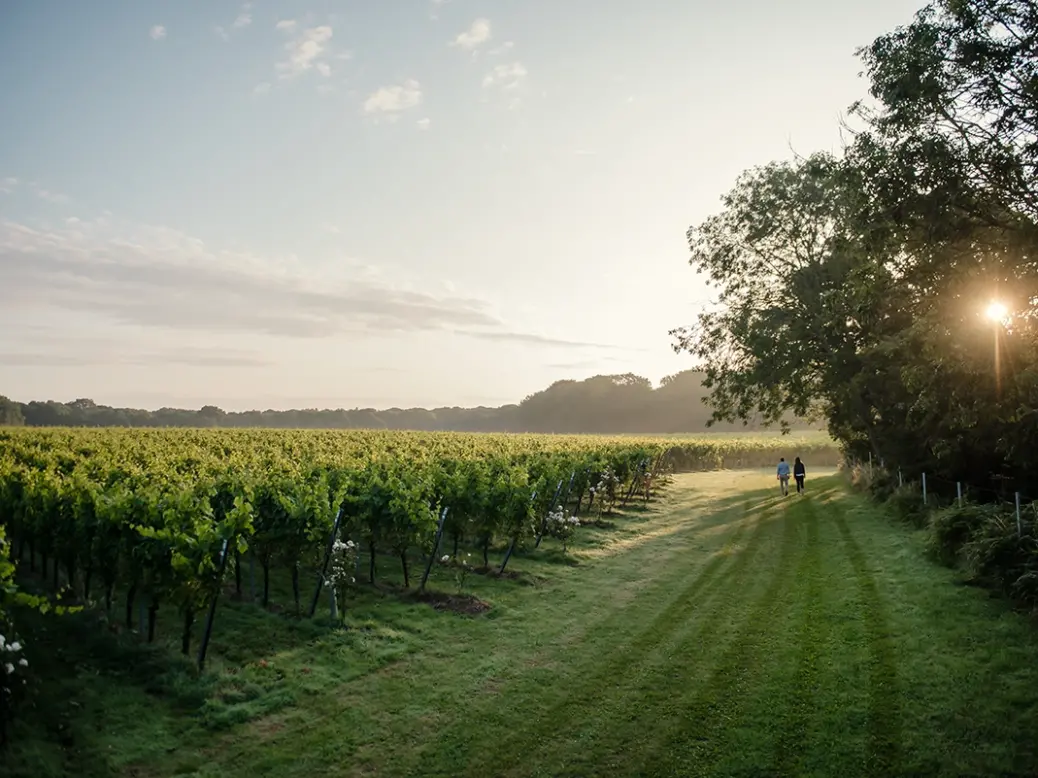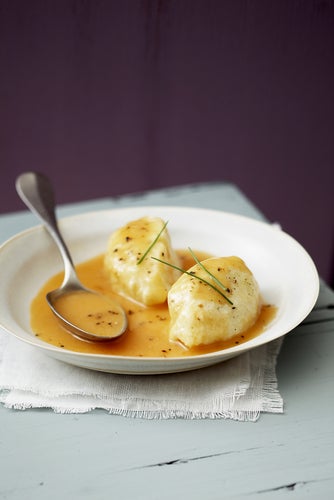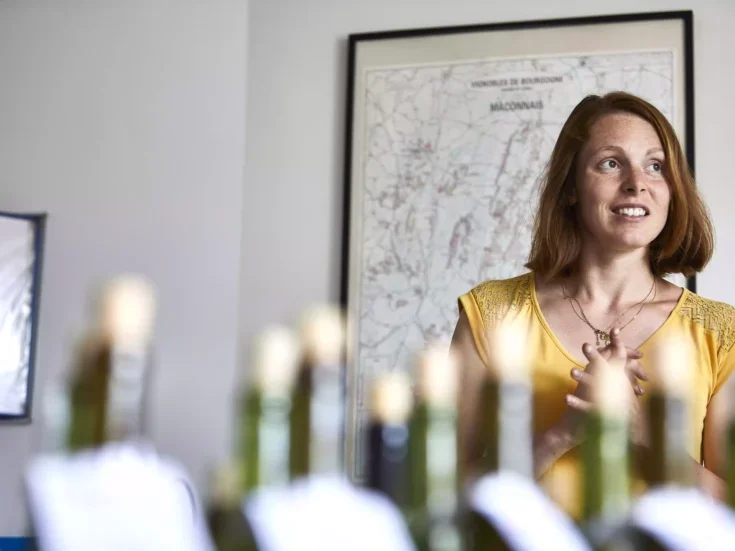
Andrew Jefford is inspired by a single bottle of Gusbourne Blanc de Blancs, a sparkling wine from the quintessentially English village of Appledore in Kent.
Appledore: Can you imagine a prettier name for an English village? Those two soft plosives nestling on pillows of mellow, unhurried vowels evoke not only Eden itself and our first forbidden fruits, but the Garden of the Hesperides, too, where the Nymphs of Evening guarded the golden apples in Hera’s orchard, singing and dancing at the far western edge of the world. One derivation for the village’s name is apuldre, later apuldor, Old English for Malus sylvestris, the crab-apple tree. There are, though, two English villages of this name, and they both lie—or lay—on the coast, one in Devon and the mouth of the River Torridge, and the other in Kent. A Brythonic (Celtic) origin is possible, too, based on –dwr or –dor, meaning water, into which the western horizon dissolves.
The grapes for this sparkling wine grew in a landscape that (like Bordeaux’s Médoc) has known huge changes in post-glacial times. Some 8,000 years ago, the sea lapped about Appledore, just as it did about the neighboring Isle of Oxney to its south, and the ports of Rye and Winchelsea just beyond. The Saxon Shore Way footpath runs along the bottom of Gusbourne’s vineyards. Longshore drift then began to pile shingle on shallow sandbars some miles from the shoreline, and these bars slowly formed embayments from which marshlands and wetlands, intersected by rivers, might stealthily grow.
Rathfinny: In the Drivers’ seat
The rearrangements of sea and land took a dramatic turn during a great storm in 1287, and there were five others in that tempestuous century. Pounding, roiling seas destroyed the port of Winchelsea and diverted the River Rother from New Romney (which found itself landlocked overnight) to Rye. Further medieval consolidation followed, via both marsh-drainage and wall-building, to the extent that what was once a vast and glittering bay, proud with bustling trade and bristling with defensive prowess, is now the lonely farmland of Romney Marsh. Here, commented the poet John Betjeman in a 1956 TV script (reproduced in an anthology called Betjeman’s England), “the roads wind like streams through pasture and the sky is always three-quarters of the landscape.”
All this prefigured the 17th-century reclamation of the Médoc from the shallows and marshes of the Gironde: St-Estèphe, too, was an island archipelago in Roman times, much like Appledore, Oxney, and Rye. There’s even a modern echo in the twin nuclear power stations of Blayais on the Gironde and Dungeness on Romney Marsh’s farthest shingles, though the latter is now decommissioned. Gusbourne and Montrose: grapes born in a bath of sea light.
Intense, pungent, pure
Gusbourne’s Blanc de Blancs is not, I should stress, a marsh wine: Appledore stands 70ft (20m) above the drained wetlands on the former coastal escarpment, and the 150 acres (60ha) of Chardonnay, Pinot Noir, and Pinot Meunier here are rooted in sand over clay, not gravel or shingle. (Since 2016, Gusbourne has chalk vineyards in West Sussex, too.) It’s a luminous spot in the “second-driest part of the UK,” according to Gusbourne’s Matthew Hope, ventilated by “constant southwesterly breezes” and warm, too, particularly in the lower-lying vineyards; harvesting here is always two weeks before the Sussex vineyards. I visited in July 2019 and remember the nourishing somnolence of the landscape. What I’d forgotten was that I came home with this bottle—until I uprooted it the other day, looking for something to share before dinner with a young Argentinian winemaker and his law-student girlfriend, both studying at Montpellier.
So, we opened it—and found England. Visually faultless, with a super-fine, rock-steady mousse. It was hard to fault the aromas, either: pure, fine-lined, sherbet-fresh yet faintly creamy, too. Thyme and wild flowers later, but just a sketch, and then another squall of glittering sherbet. It was intense, pungent, pure, and untrammeled. It struck me as not far off Brut Zero (in fact 6g/l, but the grams are invisible), crystalline and bright, without any palpable yeastiness. The removal of all these filters pulls a spotlight onto the quality of the fruit itself. The wine took it, as if by right. Its Englishness lay in that cold chisel of acidity, a gust off the Atlantic, a blow out of the north: something almost raw, almost brutal—yet in the final analysis not quite so: stylish, pithy, sustained, riding on the understated swell of a long season’s hard-won ripeness. Green apples and not gold; but they had stayed on the tree long enough to find a little inner warmth to sweeten the biter’s breath. We had great difficulty not draining this delicious Blanc de Blancs immediately.
Once the Médoc itself had been drained, a celebrated “fury of planting” followed, whipped on in Bordeaux by the losses that followed the terrible winter of 1709. If there is a fury of planting under way anywhere in the world at present, it may well be here, in England, where the area under vine has quadrupled since 2000 and risen by 70 percent over the past five years, to 9,286 acres (3,758ha). I’ve often wondered who is going to lap up the coming flood of English wine, two thirds of it sparkling, since these wines (with their requirement for special equipment, ample storage, time’s slow massage of their acid pores—and artful packaging before dispatch) must necessarily command special-occasion prices.
If they’re this good, though, perhaps the problem resolves itself. The Nymphs of Evening will form an orderly line.






